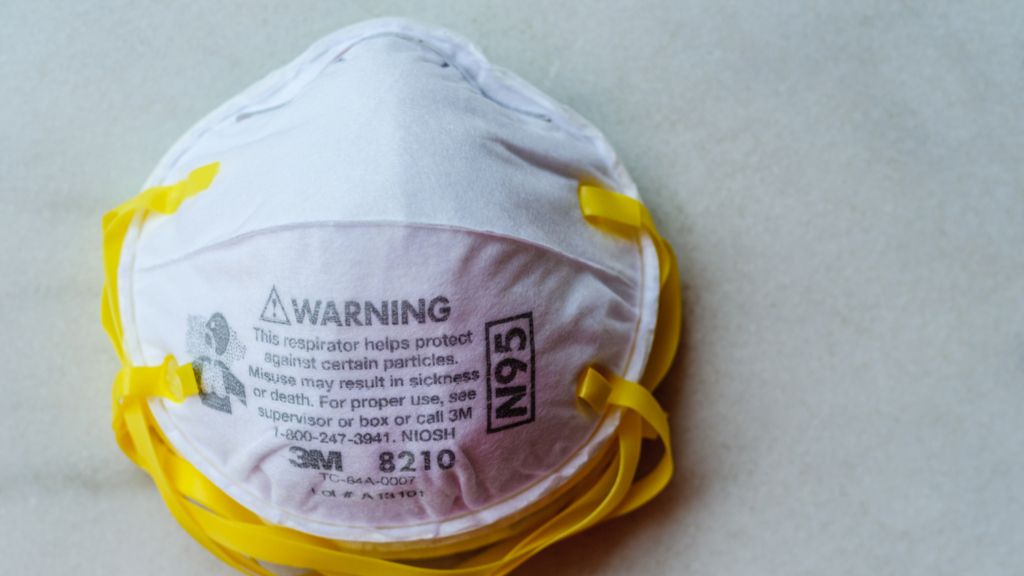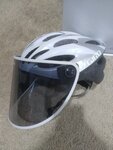The chance of infection while riding a trail is fairly small and certainly no greater than in a supermarket. The only difference is the social distances involved.
Best advice is to assume every other person you see is infected. Whether you ride or not really depends on how much risk you are willing to take.
Disclaimer: JMHO
I tend to think the opposite. I think a supermarket is far safer than a bike trail if both have the same volume of people using the area. Yes, a supermarket is less space and people cross paths far more often, but with a supermarket the pace is considerably slower, 3mph or less, so the probability of any virus being expelled is greater for it to fall out of the air before it interacts with another human. People can always judge if they want to walk down an aisle where another person is, and have options for choosing another path to avoid people as much as possible. Finally, in a supermarket, you can actively avoid all air space around people who are not wearing masks. You simply go a different way, down a different aisle, and/or wait until that person has long gone from whatever shelves/aisleway you want to access. In supermarkets, more people wear masks, which does help (a bit). Finally, a supermarket has the power to limit occupancy to maintain a maximum number of people inside, to mandate masks be worn, to check temperatures of customers prior to entry, and to remove all incentive for "impulse shopping" by having no free food or product demonstrations. The environment is more controlled to limit exposure by imposing strict guidelines that are followed by the store and it's staff, and by default, the customers.
The bike path has a cyclist imprisoned. They have no choices except to turn around and go the opposite way, no escape avenues, if someone ahead of them sneezes or coughs. The rate of speed cycling, and the height of a cyclist's face, and lack of masks makes it far more likely another cyclist will go through a recently expelled air pocket that hold the virus ...if the person(s) in front of them are infected. Fresh air notwithstanding, the studies made on air turbulance show that particles (virus and bacteria) in expelled breath are more likely to be pushed higher, stay aloft far longer (because of the turbulance), and fall to the ground much slower than breath exhaled at a standstill (due to the nature of air movement in a naturalized enviroment via breezes or other objects moving at speed in the area (this also includes birds flying in the air space of the expelled breath). Breath at higher speeds are also more likely to disburse in a wider pattern than those of a stationary or slow speed expelled breath. Also, without a limited occupancy, or any authority to control social distance, etc. a bike path is an open market free-for-all.
There isn't enough money on this planet to induce me to ride on a public bike path at the moment. I think the streets are far safer, virus wise, than a shared use path. And more acceptable than cycling around a supermarket, although that prospect is an entertaining thought.
Another disclaimer: I'm a former foxhunter (40 years) and former whip (over 10 years) with a recognized hunt. We were taught to watch the hounds closely as they followed a line to see where their noses were. A good scent left on the ground by the "correct" passing game (red fox) meant the pack ran with lowered heads, noses close to the ground. But let a breeze or bit of wind come into play, and (especially if you had the chance to see the fox lay the tracks) you will also observe how the hounds will go "off course", following the scent as it drifted UP OFF THE GROUND into the air and moved in the direction of the wind. If you saw the hounds start to raise their heads, you knew the scent was moving away and up from where it had been laid. If the hounds seemed uncertain, or cast themselves wider and wider over a supected line with little to no music, you knew right away that scent was old, and that it had probably laid too long and now had dissipated to nothing on the ground/in the air. If you ever saw a hound (or worse, hounds) running with heads high, you knew they were running riot on deer because of how that scent is "laid" (which is airbourne from scent glands on the legs, not from the foot pads like a fox). That's when you, as a staff member, had to step in to discourage the riot and get the hounds back to looking for the correct game. The reason that all hunting is in the fall and winter is because it affords the best surface (cold and dry) for the scent to remain where it was placed, and strongly viable to a hound's nose well beyond when it was first laid ("hot"). Wet is good, too. Wet holds scent, particles in the air. Hot and humid is worse because the scent doesn't remain on the ground, but very quickly rises and disperses into the upper air, making it hard for the hounds to detect, especially if the scent is high enough to be over their heads. There have been times that my poor excuse for a nose (ie: human) distinctly smelled the fox, while the hounds below me didn't, only because the warm air rose from the ground up to my face level (which was high because I was on a horse), taking the scent with it. There was also one time (thank goodness my huntsman never saw) on a winter hunt where the air did not move upwards, that I stood right on top of a very hot line, laid only a minute or so ago, and never knew it. The pack came at me in full cry, parted like the Red Sea around me and my ever patient hunter, and converged again in one fluid unit behind me, never once missing a beat on their dead accuracy following the line. I was right on top of that scent, and didn't know it. Couldn't smell it, see it, or even suspect it was there. But the hounds did. They knew.
The point of all the long winded history above is this: Air moves according to it's nature and takes all small/microscopic particulants and droplets with it when it moves. How scent, how particles, how anything is carried in the air, on surfaces, and in different situations, and especially how long it lingers, has become rather second nature to me from years of experience, even though I now no longer hunt. Like riding a bicycle - one never forgets. So those lessons on scent particles and how they move are ones that I tap into when thinking how a virus would ride the air around it, how it might move with fast air, how it might stay packed or dissipate, rise or fall, etc. And that fact that we can't see it, smell it, or taste it. Yet it is there, invisible. Makes me feel very, very vulnerable. Which is why I will not ride my bike where others are congregated, riding.

